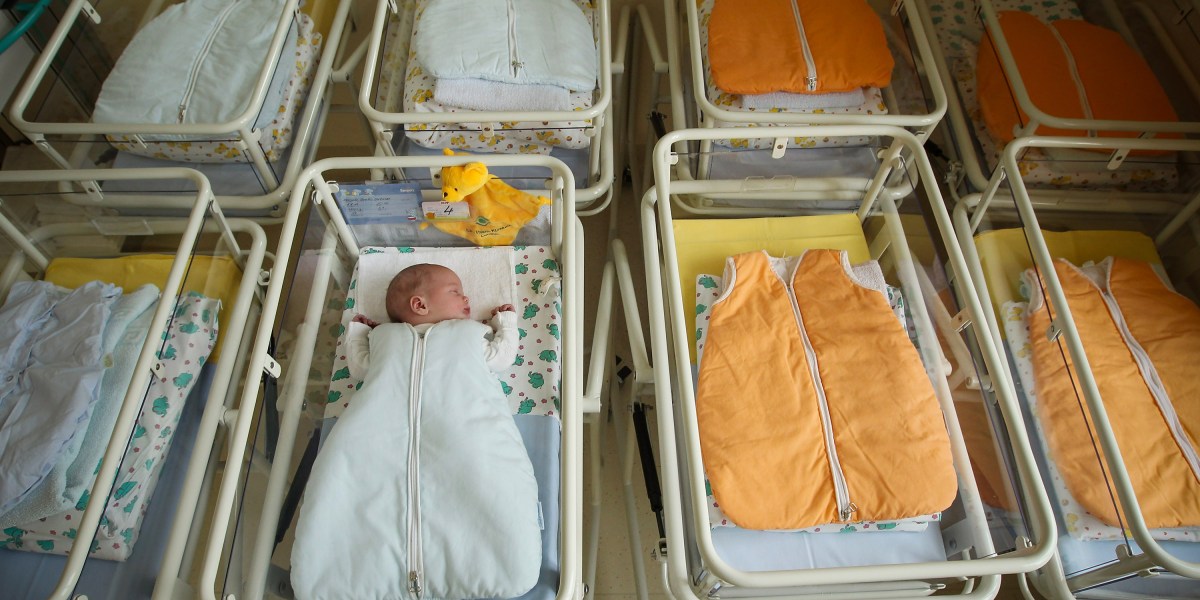But plenty of scientists are incredibly worried about just that. Improvements in health care and sanitation are helping us all lead longer lives. But we’re not having enough children to support us as we age. Fertility rates are falling in almost every country.
But wait! We have technologies to solve this problem! IVF is helping to bring more children into the world than ever, and it can help compensate for the fertility problems faced by older parents! Unfortunately, things aren’t quite so simple. Research suggests that these technologies can only take us so far. If we want to make real progress, we also need to work on gender equality.
Researchers tend to look at fertility in terms of how many children the average woman has in her lifetime. To maintain a stable population, this figure, known as the total fertility rate (TFR), needs to be around 2.1.
But this figure has been falling over the last 50 years. In Europe, for example, women born in 1939 had a TFR of 2.3—but the figure has dropped to 1.7 for women born in 1981 (who are 42 or 43 years old by now). “We can summarize [the last 50 years] in three words: ‘declining,’ ‘late,’ and ‘childlessness,’” Gianpiero Dalla Zuanna, a professor of demography at the University of Padua in Italy, told an audience at the annual meeting of the European Society of Human Reproduction and Embryology earlier this week.
There are a lot of reasons behind this decline. Around one in six people is affected by infertility, and globally, many people aren’t having as many children as they would like. On the other hand, more people are choosing to live child-free. Others are delaying starting a family, perhaps because they face soaring living costs and have been unable to afford their own homes. Some hesitate to have children because they are concerned about the future. With the ongoing threat of global wars and climate change, who can blame them?
There are financial as well as social consequences to this fertility crisis. We’re already seeing fewer young people supporting a greater number of older ones. And it’s not sustainable.
“Europe today has 10% of the population, 20% of gross domestic product, and 50% of the welfare expense of the world,” Dalla Zuanna said at the meeting. Twenty years from now, there will be 20% fewer people of reproductive age than there are today, he warned.

